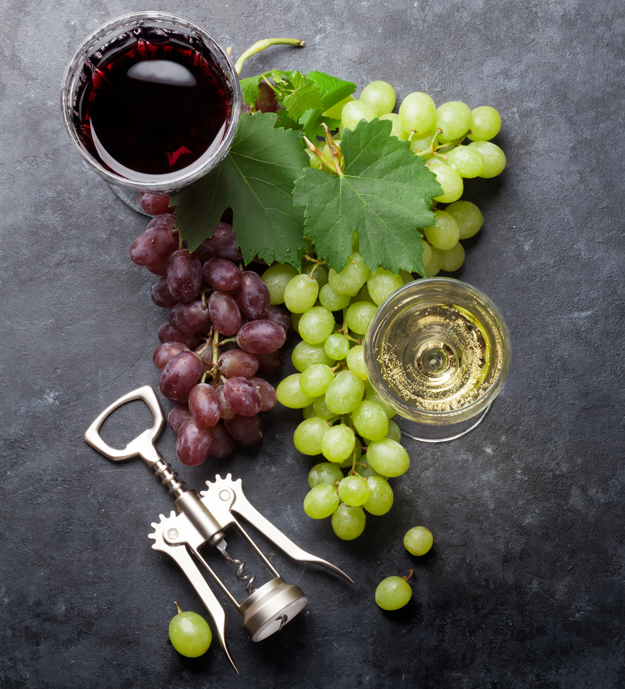
If asked to describe Chardonnay with an original perspective, I would say that Chardonnay is the “global superstar” of the wine world. Chardonnay has become a familiar and recognizable name, irrespective of the fact that it might be unclear for some consumers whether it is a grape varietal, a style of wine or perhaps even a region.
One of the most planted grape varietals on the planet, Chardonnay is also the top selling “wine varietal” distributed across the planet. Its ability to grow and produce quality wine in very diverse types of climates results in the production of a wide range of styles but also (even more diverse) quality levels from the “cheap and un-quaffable” to the “scrumptious and unaffordable.”
The story of Chardonnay began around the 13th century at the very heart of France in Burgundy (where, apart from rare exceptions, Chardonnay is still the only white grape allowed). The success of white winemaking in Burgundy is the reason winemakers all over the world increased plantings of this grape. Production of French iconic white wines encouraged winemakers across the planet to craft Chardonnay in the “Burgundy style.” In the 1960s, winemakers (particularly in California) would flood the market with wines misleadingly branded as “Chablis” (which, just like “Champagne,” is a geographical designation and not a style!) to embrace this Chardonnay craving.
The “Judgment of Paris” in 1976 played a big role in Chardonnay's development. This famous (or as a French citizen, I should say “infamous”) blind tasting competition that included both American and French wines saw Chateau Montelena's 1973 Chardonnay from California win first place.
This marketing opportunity led Californian wine producers to go further, revamp their vineyards and most importantly launch their own styles. Other varietals were uprooted and replaced with the “amazing grape” (even in areas where they were thriving and producing great wines!). Everyone had to have a brand of Chardonnay in their portfolio. Varietal labelling also helped boost American consumers' awareness for Chardonnay.
Chardonnay is very adaptable and climate is a paramount factor when it comes to the wine's style. Different levels of ripeness impart diverse and distinctive flavors. Additionally, because Chardonnay is not an aromatic grapes (compared to Sauvignon Blanc for example), vineyards character and winemaking techniques greatly influence the flavor profile of the wine. Let's look at a couple of this grape varietal's many facets from two celebrated wine regions.
The subtle, cool and citrusy side of Chardonnay
Wines made with Chardonnay in cooler regions (such as in the northern part of Burgundy in France) are usually light bodied and high in acidity. Because of the latitude, the ripening season is short, and grapes don't accumulate too much sugar. These wines typically display flavors of citrus, apple and green plums, which are enhanced by using winemaking techniques such as stainless steel fermentation preserving the fruit profile. In Chablis, in particular, “terroir” is expressed at its best. These wines have delicious distinctive mineral flavors.
Côte d'Or is an area within a short drive south, located in the heart of Burgundy. With a slightly more moderate climate, this is the cradle of the most famous and celebrated white wines in the world: Montrachet, Meursault and Corton-Charlemagne (amongst others).
Skilled winemakers craft fine wines by using diverse winemaking techniques such as fermentation and ageing in oak barrel; these imparting subtle nuances and character to the wine.
While some of the top quality Burgundy wines convey a high price tag, many small producers offer excellent styles of Chardonnay (unoaked or with a light touch of oak). Wines from Mâconnais and Côte Chalonnaise (further south) also offer great and affordable alternatives.
The powerful and nutty side of Chardonnay
In California (a much warmer climate), Chardonnay is the King of white grapes and benefits from a longer ripening season. Consequently, it accumulates more sugar, resulting into generally full-bodied wine with high alcohol and medium acidity. The flavor profile of Californian Chardonnay reveals tropical fruits, melon and peach. Wines often go through a process called “Malolactic Fermentation,” which softens the acidity, increases the texture and imparts a buttery mouth feel
Oak plays a big role in crafting Californian wines. A little oak allows some oxygen during the winemaking process and adds texture as well as a hint of vanilla and caramel. Moderation with oak is key to produce quality Chardonnay. Sometimes aromas and flavors of clove, cinnamon and coconut can be overwhelming (especially with “mass-produced” Chardonnay brands). It is worth looking for smaller wineries with talented winemakers who deliver extremely complex and delicious examples of Chardonnay.
To learn more and embrace the many facets of Chardonnay, I strongly recommend to taste and compare different styles and regions around the world. From France to Australia, via California and Italy, Chardonnay has a style for everyone! As part of its annual Wine Class Series, Historic Hotel Bethlehem is hosting a class dedicated to the “amazing grape” on March 22nd: Chardonnay from the Old World to the New World. I hope to see you there!
Cheers!

About the Author
Céline Riquelme is an International wine specialist, wine consultant and wine blogger.
A native of France, Céline has worked and lived throughout Europe and the USA and holds the Diploma of the WSET (Wine & Spirit Education Trust). Céline founded “Three Cheers Wine Solutions” based in Center Valley to share her knowledge and passion for wine. Céline helps clients select the best wines to serve during their special events and hosts tailor-made wine tasting experiences as well as wine educational classes. Occasions range from small parties (private dinners, bridal showers) to large gatherings (weddings, networking and charity events, corporate team-building…)
Céline also provides consulting to restaurants to optimize their wine list, train their staff and enhance the restaurants' profile through wine related events. She is also the official Wine Coordinator for the restaurants at the Historic Hotel Bethlehem.
To learn more about hosting a private wine tasting or get advice regarding wine selection for a future event threecheerswine.com



 threecheerswine
threecheerswine threecheerswine
threecheerswine










